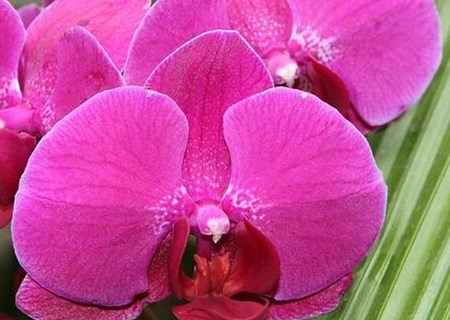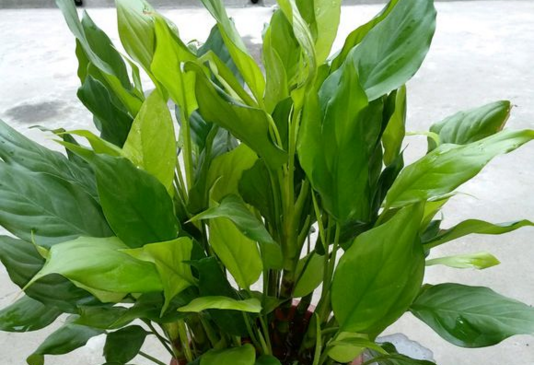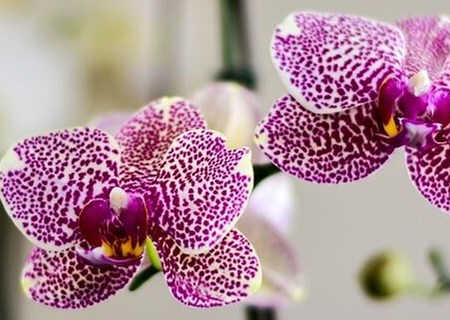What are the seed planting methods of epiphytic Phalaenopsis? When will it blossom? What are we going to do after flowering?
Phalaenopsis belongs to the genus Phalaenopsis of Orchidaceae and is an epiphytic orchid. The thick white air roots of Phalaenopsis are exposed around the leaves, which not only absorb nutrients in the air, but also grow and photosynthesis. Do you know the seed planting methods of Phalaenopsis? When will it blossom? How to deal with it after flowering? During the Spring Festival, Phalaenopsis plants draw long pedicels from their leaf axils and blossom like butterflies, which are favored by flower fans and are known as the "queen of foreign orchids".

I. seed planting methods of Phalaenopsis
1. Prepare before sowing
Make sure that the pods are empty, and if they are empty, no seedlings can come out.
Determine the degree of seed activity, generally speaking, 11% degrees after the seed of Phalaenopsis.
2. Sowing method
Natural sowing method:
The dehiscent seeds were sown in the flowerpot of the parent plant. There are symbiotic bacteria necessary for Phalaenopsis seed germination in the plant material of parent plants, but whether the existence of this symbiotic bacteria can make seeds germinate depends on luck.
The natural sowing method is very simple and suitable for family Phalaenopsis planting. However, the success of this method has been thought to be very small, and the editor does not recommend that people use this method to breed Phalaenopsis.
Aseptic sowing:
Wash the uncracked, ripe capsule and put it away first.
Put it in a prepared, 75%-90% ethanol or chloroform solution and soak for 2-3 seconds, neither too much nor too little.
After this step is completed, we can soak it in 5%-10% bleach solution or 3% hydrogen peroxide for 5-20 minutes.
Take out the seeds and soak them in the same disinfectant for another 5 minutes or 20 minutes.
After that, we can use a professional filter to remove the solution we use to soak, then take out the seeds, and finally spread the seeds evenly on the surface of the prepared medium. Remember to use fine needles. After all, the seeds of Phalaenopsis are very small.
Culture conditions: light intensity: 2000-3000 lux. The light time is 10: 18 hours and the temperature is 20: 26 ℃.
After 9-10 months, the seedlings can grow 2-3 leaves and then be planted in pots.
This method is very rigorous and scientific, generally carried out in the laboratory, and there are few qualified breeding scenes in the family.
When will Phalaenopsis blossom
Phalaenopsis blossoms once or twice a year, the florescence is usually around the Spring Festival, and the viewing period can be as long as 2 to 3 months.
When the flowers wither, the withered flowers should be cut off as soon as possible, which can reduce the consumption of nutrients.
Cut the flower stem from 4 to 5 nodes at the base, and blossom again after 2 to 3 months.
But in a domestic environment, flowers can only blossom once a year.
Third, what to do after flowering
When the flowers wither, the withered flowers should be cut off as soon as possible, which can reduce the consumption of nutrients. If the flower stem is cut from 4 to 5 nodes at the base, it can blossom again after 2 to 3 months. However, the nutrient consumption of the plant is too high, which is not conducive to the growth of the coming year. If you want to blossom again in the coming year, it is best to cut the flower stem from the base, and when the matrix ages, it should be replaced in time, otherwise the air permeability becomes worse, which will cause root rot, weaken plant growth and even die.
Time: 2019-03-18 Click:
- Prev

What if the leaves of the evergreen of the Lilia nationality turn yellow? What is its effect and function?
Evergreen, perennial herbs, rhizome thick and short, with many fibrous roots, dense white woolly roots, then evergreen leaves yellow how to do? What is its effect and function? According to the editor's inquiry, many people raise evergreen with yellowing leaves, which is caused by too much sunlight.
- Next

Why does the perennial herb Phalaenopsis not bloom? What do you need to pay attention to in planting? How do you breed? Is it poisonous?
Phalaenopsis was born in the tropical rain forest, the nature likes to be warm and afraid of cold. The suitable temperature for growth is 15-20 ℃, and it will stop growing below 10 ℃ in winter, and it is easy to die below 5 ℃. It is a kind of perennial herb. Do you know why Phalaenopsis doesn't bloom? What do you need to pay attention to in planting? How do you breed? Is it toxic?
Related
- Fuxing push coffee new agricultural production and marketing class: lack of small-scale processing plants
- Jujube rice field leisure farm deep ploughing Yilan for five years to create a space for organic food and play
- Nongyu Farm-A trial of organic papaya for brave women with advanced technology
- Four points for attention in the prevention and control of diseases and insect pests of edible fungi
- How to add nutrient solution to Edible Fungi
- Is there any good way to control edible fungus mites?
- Open Inoculation Technology of Edible Fungi
- Is there any clever way to use fertilizer for edible fungus in winter?
- What agents are used to kill the pathogens of edible fungi in the mushroom shed?
- Rapid drying of Edible Fungi

